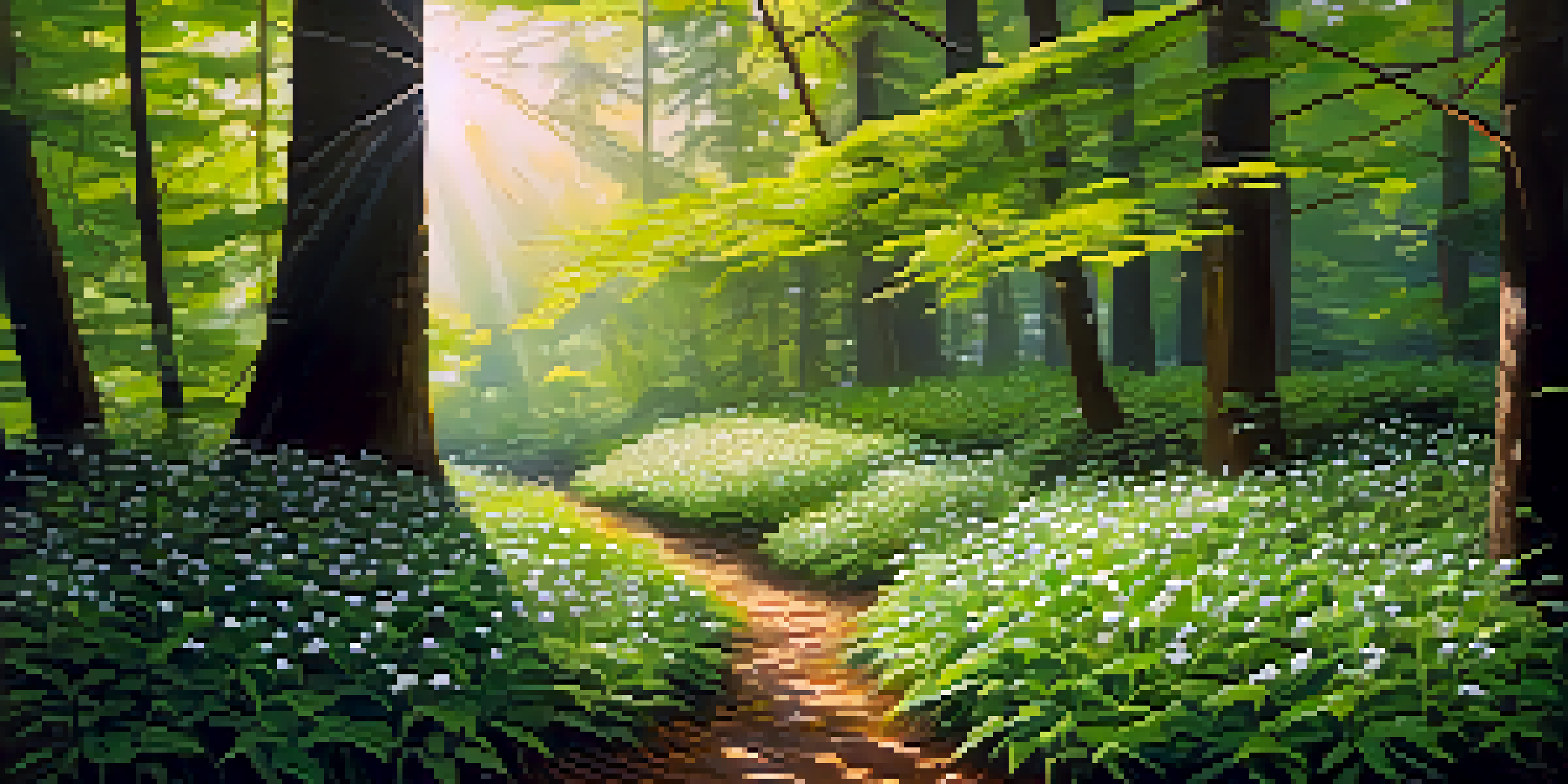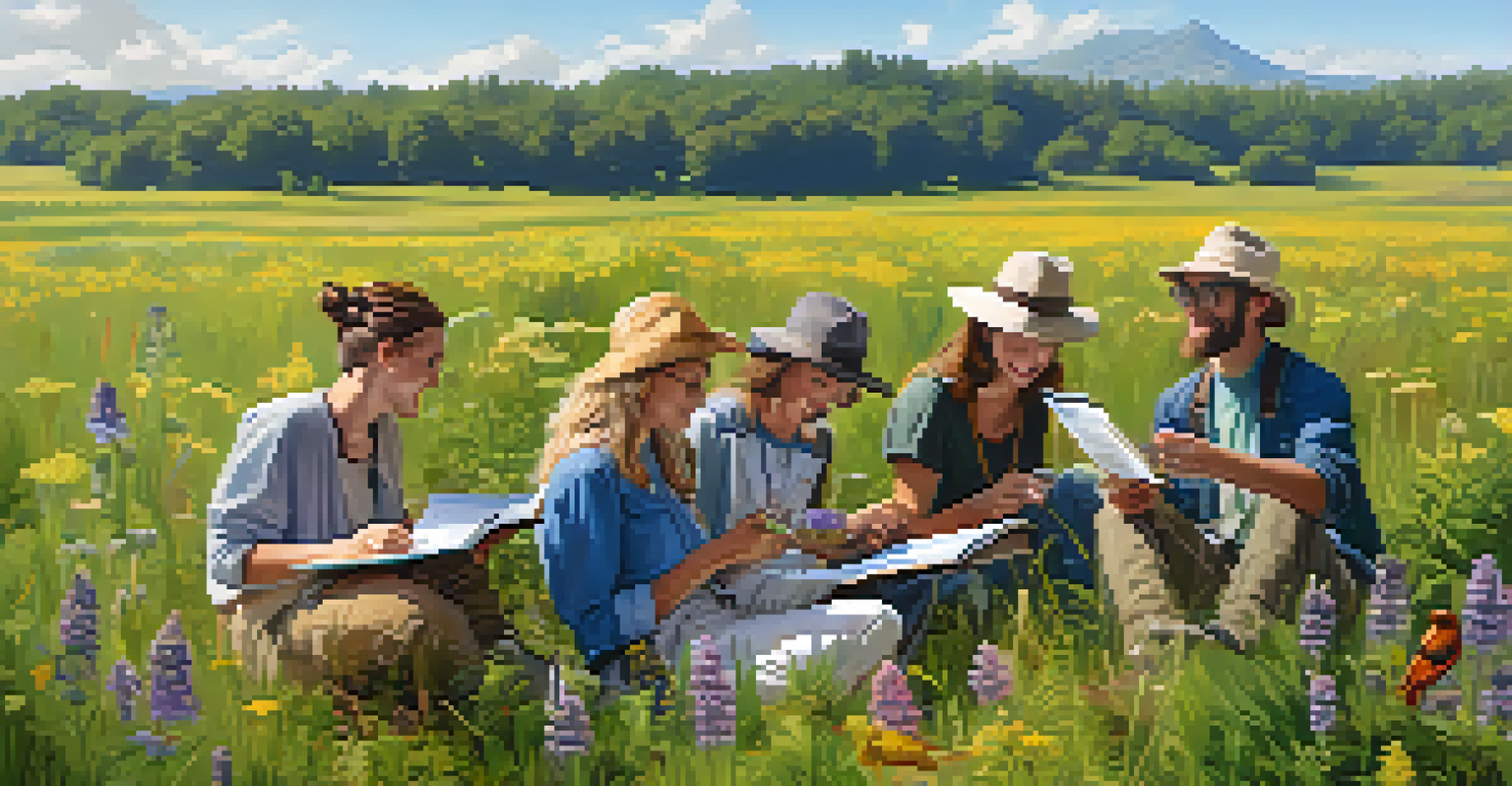The Importance of Identifying Edible vs. Toxic Plants

Understanding the Basics of Edible and Toxic Plants
Identifying edible versus toxic plants is essential for anyone who enjoys foraging or gardening. It's not just about culinary delight; it’s also about safety. Some plants that look harmless can be surprisingly poisonous, making knowledge crucial for preventing accidents.
The greatest danger in times of turbulence is not the turbulence; it is to act with yesterday's logic.
Consider a common scenario: you're hiking in the woods and spot some wild berries. Without proper knowledge, you might mistake a toxic variety for a safe one. This simple misidentification can lead to severe health issues, underscoring the importance of education in this area.
Learning to distinguish between these plants can be as simple as joining local workshops or using reliable resources. With a little effort, you can cultivate awareness that not only enriches your culinary experiences but also protects your well-being.
The Health Risks of Consuming Toxic Plants
The health risks associated with consuming toxic plants can range from mild discomfort to severe illness or even death. Symptoms may include nausea, vomiting, abdominal pain, and in extreme cases, organ failure. Understanding these risks is vital for anyone who might be tempted to try wild edibles.

Take, for example, the notorious poison hemlock, which can be fatal if ingested. Its delicate white flowers may seem inviting, but they hide a dangerous secret. This is a stark reminder that beauty in nature can sometimes be deceiving, emphasizing the need for caution.
Know Edible vs. Toxic Plants
Identifying edible and toxic plants is crucial for safety and enhances foraging experiences.
By familiarizing yourself with toxic plants, you can avoid these potentially life-threatening situations. Knowledge is power, and being informed about what you consume can save your life.
Benefits of Knowing Edible Plants
Identifying edible plants can open up a world of culinary possibilities and health benefits. Many wild plants are nutrient-dense and can enhance your diet significantly. Imagine incorporating fresh dandelion greens or wild garlic into your meals; it’s both delicious and rewarding.
Nature does not hurry, yet everything is accomplished.
Moreover, foraging can be a sustainable way to source food while connecting with nature. It encourages mindfulness as you learn to observe your environment and respect natural ecosystems. This connection can lead to a deeper appreciation for the food you consume.
In addition to the culinary benefits, knowing edible plants can also foster a sense of adventure. Each foraging trip can feel like a treasure hunt, sparking curiosity and excitement as you discover new ingredients.
Common Misconceptions About Edible Plants
One common misconception is that all wild plants are safe to eat if animals consume them. While many plants are indeed safe, animals have different digestive systems that allow them to process toxins that are harmful to humans. This belief can lead to dangerous mistakes, underscoring the importance of research.
Another myth is that cooking can eliminate all toxins in plants. While cooking can reduce certain harmful substances, it doesn't make every toxic plant safe. For example, the toxic compounds in certain mushrooms remain even after cooking, making identification crucial.
Health Risks of Toxic Plants
Consuming toxic plants can lead to severe health issues, emphasizing the importance of proper knowledge.
Being aware of these misconceptions can help you make more informed choices. Always do your homework and consult reliable guides or experts before trying any new wild plants.
How to Identify Edible vs. Toxic Plants
Identifying plants requires a keen eye and a bit of practice. Start by learning the key characteristics of common edible plants in your area. Resources such as field guides or mobile apps can be incredibly helpful for beginners.
It's also beneficial to join local foraging groups or classes. Engaging with experienced foragers allows you to learn firsthand about plant identification. Plus, it’s a great way to meet like-minded individuals who share your interests.
Always remember to take notes and photos during your explorations. Documenting your findings can enhance your learning process and serve as a reference for future foraging adventures.
The Role of Local Flora in Ecosystems
Local flora plays a crucial role in maintaining the health of ecosystems. Edible plants provide food for wildlife, while toxic plants can help regulate animal populations. Understanding this balance can foster a deeper appreciation for the natural world around us.
For instance, many edible plants, like clover, improve soil health and promote biodiversity. They also serve as food sources for various pollinators, contributing to a thriving ecosystem. Recognizing these connections highlights the importance of foraging responsibly.
Misconceptions About Plant Safety
Many believe that all wild plants are safe if animals eat them, but this can lead to dangerous mistakes.
By respecting local flora, we can contribute to the sustainability of our environment. Acknowledging the interconnectedness of all living things encourages thoughtful practices in gardening and foraging.
Conclusion: The Value of Knowledge in Nature
The journey of identifying edible versus toxic plants is not just about safety; it's about cultivating a relationship with nature. Understanding which plants are safe to consume enriches our lives and promotes sustainability. This knowledge empowers us to make informed choices.
As you embark on this journey, remember that mistakes can happen, but learning from them is part of the process. Embrace the adventure of discovery, and don’t hesitate to seek guidance from experts along the way.

Ultimately, the value of knowing what you can safely eat extends beyond individual health—it contributes to a healthier planet. So grab a field guide, head outside, and start exploring the wonders of nature with confidence!